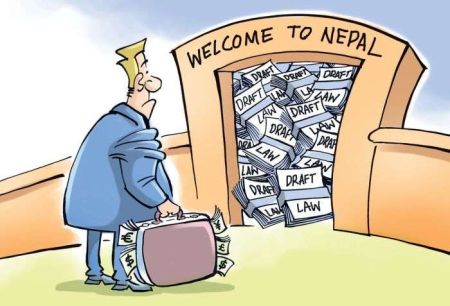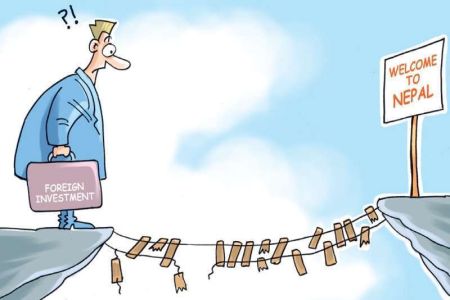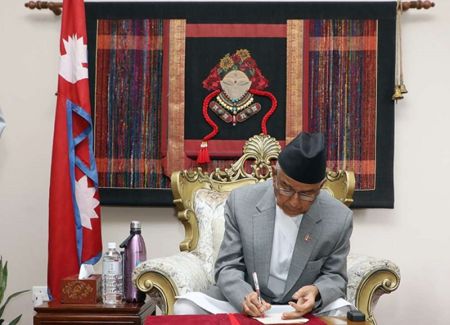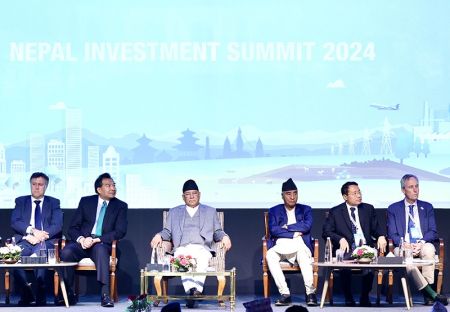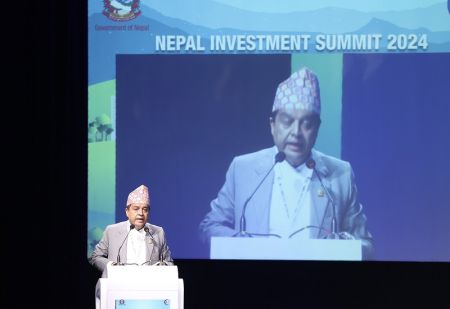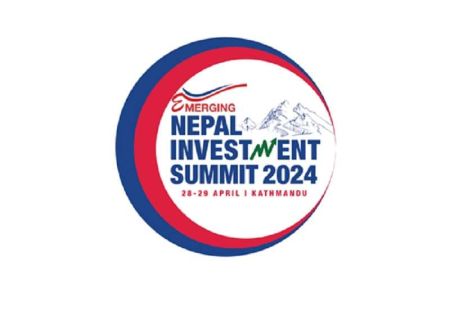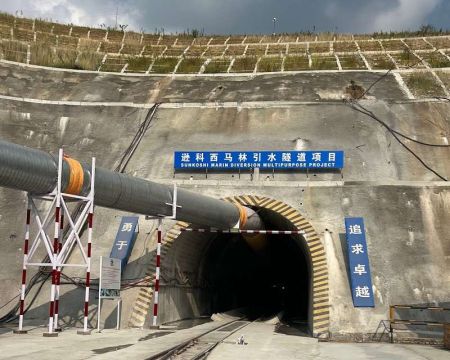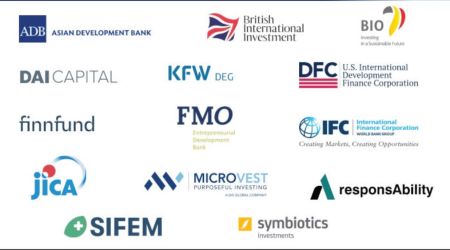Motivated by the evidence on the failures of state-owned enterprises (SOEs), governments in more than a hundred countries have undertaken privatisation programmes in the last twenty-five years or so. Decades of poor performance and inefficient operations by SOEs led the governments to embrace privatisation. Thousands of SOEs have been given away to the private sector in Africa, Asia, Latin America, and Eastern and Western Europe. Throughout the world, annual revenues from privatisation soared during the late 1990s, peaking in 1998 at over US $100 billion.
Widespread privatisation in recent decades has generated a reasonable hype concerning the effects of ownership on performance. Most studies find that privatisation has a positive impact on profitability and efficiency of business firms. However, very little is known about the effects of partial privatisation where the government remains the controlling owner. India’s privatisation programme has followed a pattern of partial privatisation through share offerings but at a particularly slow rate. Between 1991 and 1999, the Indian government raised about $9 billion in privatisation revenues, compared to nearly $71 billion raised in Brazil and $21 billion in China over the same period, according to Global Development Finance Report 2001.
Since both ownership and control shift to the private sector at the same time, full privatisation makes it difficult to distinguish between the political and the managerial perspectives. In contrast, under partial privatisation, the shares of the firm are traded on the stock market while the firm remains under government control and subject to political interference. Let’s have a look at the following examples of how some countries and regions responded to privatisation in the last two to three decades.
India
The state intervention in SOEs has been undergoing a close scrutiny in many developing countries including India since 1980. The argument was that excessive political interference and lack of managerial interest (autonomy) hampered the performance of SOEs. Economic policy and state-owned sector in the post-independent India can be divided into four phases: (i) 1950-1965, (ii) 1966-1984, (iii) 1984-91 and (iv) post-1991 policy regime. The second sub-period of the second phase i.e. 1973-84 recorded a slow process towards liberalisation, which culminated into an irreversible process of liberalisation of the economy through the third (1984-91) and during final phase (1991 onwards).
Concepts such as liberalisation, privatisation, disinvestment and market-friendly approach replaced the old concepts of socialism and mixed economy. The period of 1966-84 culminated in a total transformation in the economic policy where economy was made predominantly dependent on market forces rather than on the state. The attempt, it seemed, was to depoliticise economic decisions as far as possible. The industrial policy that was initiated in 1985 was the culmination of the process of drifting away, which started during the second phase of the economic policy in India. The 7th Plan (1985-90) proposed larger planned outlays for the private sector as compared to the state-owned sector for the first time in the planning history of India.
India witnessed a major policy reform programme consisting of considerable deregulation of industrial sector as well as liberalisation of foreign investment and technology imports since July 1991. The 8th, 9th and 10th Plan documents suggested many policy initiatives towards restructuring, modernisation, rationalisation of capacity, product-mix changes, privatisation, autonomy, performance accountability and disinvestments policy. The movement of denouncing socialism that started in many parts of the world influenced India’s policy makers as well.
India undertook sweeping economic reforms that included deregulation and privatisation in response to the foreign exchange crisis in 1991. Since the Industrial Policy Resolution of 1991, which outlined the economic reforms, nearly every government’s annual budget has declared that the privatisation goal is to reduce government ownership to 26 per cent of equity. In the decade following the launch of the privatisation programme, the government sold minority shares through a variety of methods including auctions and public offerings in domestic markets, and through global depository receipts in international markets.
The share of state-owned sector in total investment continuously declined since the 1980s is illustrated in the following table. The relative shares of the state-owned and private sectors during 7th, 8th, 9th and 10th plans clearly signal the rising importance of the latter at the cost of the former.
The 9th Plan divided SOEs into three categories (i) profit-making PSEs (Public Sector Enterprises); (ii) PSEs making marginal profits and losses; and (iii) PSEs incurring substantial losses. Accordingly, all PSEs were placed in suitable categories. Disinvestment Commission, started in 1996, primarily to discipline PSEs and make them result oriented was developed into a full-fledged Ministry for Disinvestment, thereby institutionalising the process of reforms and restructuring of PSEs. Once it was established that privatisation of SOEs was no longer a choice but an imperative, the stage was set for privatisation of SOEs.
Privatisation Trend
The emphasis of Indian privatisation from 1991 to 2000 was on disinvestment through offloading of government’s shares to the state-owned or financial institutions. During this period, the government offloaded shares in as many as 39 SOEs. However, since March 2000, the emphasis has increasingly been on strategic sales of identified SOEs. The table below briefly summarises the amount realised and the number of SOEs disinvested or privatised till November 30, 2003.
Modern Foods Industries Limited (MFIL) was the first SOE to be strategically sold followed by Bharat Aluminium Company (BALCO). Fifty one per cent of BALCO’s shares were sold to Sterlite Industries for Rs 5,515 million. Following this sale, the government was quick to proceed with strategic sales in important firms by divesting 51 per cent of the shares in Computer Maintenance Corporation (CMC) to Tata Sons and 74 per cent of the shares in HTL, PPL and Jessop (for Rs 550 million, Rs 1,520 million and Rs 180 million respectively) to Himachal Futuristic Corporations. Nineteen hotels of Indian Tourism Development Corporation (ITDC) and three hotels of Hotel Corporation of India Ltd (HCIL) collectively contributed Rs 6,866 million towards divestiture or disinvestment proceeds. For all these 19 hotels, 100 per cent of the equity was sold. In terms of individual sales, maximum proceeds (Rs 37 billion) were collected by selling 25 per cent of the equity in Videsh Sanchaar Nigam Limited (VSNL), followed by the contributions made by selling 27.5 per cent equity of Maruti Udyog Limited (MUL – Rs 24 billion) and Indian Petrochemicals Corporation Limited (IPCL – Rs 15 billion).
Post-liberalisation era
The government was forced to revise its economic policies following the exceptionally severe balance of payments and fiscal crisis in 1991 which resulted in disinvestment of government equity in the PSEs. The government steadily paved the way for a level playing field and competition with the private sector and thus resulted in PSEs being envisioned as revenue earning ventures of the government. Thirty individual Central PSEs were divested to select financial institutions namely Life Insurance Corporation (LIC) of India, General Insurance Corporation and Unit Trust of India (UTI) in bundles. Post-1996, sale through the global depository receipt route was also permitted and PSEs capitalised this opportunity to access international financial markets.
There was a strategic shift in the government policies between FY 2000 and FY 2004 that facilitated ‘Strategic Sale’ or disinvestment of government stake in PSEs. The process involved transfer of big blocks of shares and management control to the strategic partners that were identified through competitive bidding. Post-FY 2005, disinvestment realisations were primarily through the sale of small equity stakes. The government realised an amount of Rs 534.23 billion as disinvestment proceeds between April 1992 and May 2008.
In recent times, several government-owned companies have either started disinvestment process or are planning to begin so including the Steel Authority of India Ltd (SAIL) and Oil and Natural Gas Corporation Limited (ONGC). According to Disinvestment Secretary Sumit Bose, Follow on Public Offer (FPO) in SAIL was expected to raise Rs 7-8,000 crores while divestment of five per cent stake in ONGC will fetch the government around Rs 13,000 crores based on present market valuations. The government has proposed a disinvestment target of Rs 95,000 crores from the sale of shares in public sector companies over the next three fiscals, including Rs 40,000 crores in the current fiscal. Last fiscal, the government had raised Rs 22,400 crores through disinvestment in PSU companies by coming out with three Initial Public Offerings (IPOs) and three FPOs. The value of Indian government’s stakes in listed SOEs is estimated at about US$ 320 billion and if unlisted companies are included as well, the total value would be approximately US$ 460 billion.
Russia
The world learnt from the Russian experience that introduction of the ‘shock therapy’ or rapid mass privatisation can also lead to massive corruption. It underlined the fact that good governance mechanism is vital. Historically, private ownership of production facilities, financial companies and land was absent in the Union of Soviet Socialist Republics (USSR) for over 70 years starting 1917. As per the constitution of the Russian Socialist Federative Soviet Republic of 1918, land was transferred to farming units for management; all production units to ‘labour collectives’; and the ownership of forests, natural resources, etc to the state.
The Russian government spontaneously introduced a mass privatisation process in 1991 and introduced what was termed as ‘shock therapy’ – instant price decontrols and rapid opening up of markets. This large scale movement of ownership transfer brought with it massive corruption in the auction process. The mortgage auctions in 1995 were some of the worst cases. Finally in 1997, a new model of privatisation was instituted under which companies were sold rather than distributed. Further, in 1998, the government also introduced processes of asset valuation by international advisors.
Current Scenario
The SOEs continue to play an integral role in the Russian economy even though the role of private sector is ever expanding in Russia. The Russian government believes in the state role through ownership for industrial growth, economic diversification and energy security. The fraction of firms with 100 percent state and mixed (state and private domestic ownership) as per 2007 data is as follows:
• All firms and organisations:
11 percent
11 percent
• Employment: 39 percent
• Capital investment: 32 percent
• Fixed assets (state ownership greater than 50 percent): 23 percent.
Hong Kong
Hong Kong is a relative newcomer to the global club of countries opting for privatisation. It has actually missed some opportunities to learn about and avoid certain problems of privatisation experienced in other countries. There have also been socio-political issues that are unique to Hong Kong. Its experience needs to be seen in the context of the long established worldwide phenomenon of SOEs and the trend of privatisation from early 1980s.
Despite being a British colony, Hong Kong didn’t join the global trend of privatisation during 1980s and 1990s. Some ideas about privatisation were addressed in the government report for Public Sector Reform in 1989 but not followed up for two main reasons. First, there was no strong practical need to privatise public enterprises. Donald Tsang, Chief Executive of the Hong Kong Special Administrative Region (HKSAR), had once acknowledged that the erstwhile colony had little external, political or budgetary pressure to reform its public sector.
Hong Kong recorded public budget surpluses year after year in the post-war period, much envied by other governments. The second reason for ‘no privatisation’ was political. During the long political transition till 1997, China opposed any colonial government proposal to privatise government assets in fear of a British plot to sell out the interests of the future HKSAR administration. However, the arguments about privatisation in Hong Kong have been reversed after 1997.
Divestment Plans
Before the return of sovereignty to China in 1997, the Hong Kong government did not divest public assets because of China’s opposition and an absence of budgetary pressure. During the political transition, the colonial government was regarded as fairly competent in dealing with public confidence crises. However, after 1997, these conditions changed quite dramatically. The new conditions in HKSAR prompted the government to formulate divestment plans, but at the same time they raised potential problems for the implementation of the plans. After the political transition, China no longer opposed privatisation proposals of the HKSAR government.
Three Divestment Exercises
The Hong Kong community is generally receptive to the ideas of small government and privatisation compared to many other developed communities. The general acceptance in Hong Kong is partly due to the fact that the government uses public offers as the main strategy of divestment. The popular belief is that citizens will make good profits once they are allocated shares from the government’s IPOs. Although the public generally favours public listing, the divestment exercises in Hong Kong were not without controversy. Fundamental conflicts of public interest in privatisation have had to be resolved from time to time.
MTRC
The Mass Transit Railway Corporation (MTRC) was the first target of divestment in Hong Kong. In late 1999, the government introduced new legislation to replace the MTRC ordinance and to grant a proposed new MTRC company the right to operate the subway system. In October 2000, 24 percent of the MTRC shareholding (US$1.28 billion in value) was divested by way of listing in Hong Kong, London and New York. The offer was 18 times over-subscribed and broke the local record for an initial offering.
Tunnels and Bridge
After the Legislative Council approved the relevant grant of power, the government divested the future revenues from five toll tunnels and a toll bridge in August 2004 under a securitisation scheme involving the listing of government notes worth US$ 770 million. The offer to individual investors was two times over-subscribed, and the portion earmarked for institutional investors was heavily subscribed. The assets themselves continue to be government-owned through a new government company, Hong Kong Link 2004 Limited. The day-to-day operation of the tunnels and bridge as managed by franchised private firms remains unchanged.
Link-REIT
The Housing Authority (HA — a statutory corporation) announced in July 2003 that it planned to divest most of its retail and car-parking facilities in public housing estates. The plan was that the government would first set up a new asset-owning and management company, Link Limited, and then divest its ownership entitlement to the company’s future revenue streams in full by way of the listing of a real estate investment trust fund, Link-REIT. The trust fund, REIT, was chosen as a vehicle for divestment partly because it would restrict the scope of Link Limited’s business initiatives and partly because the government wanted to promote REIT as a new type of financial product. The HA planned to transfer the retail and car-parking assets to Link Limited after the scheduled listing had been completed. In due time, Link Limited took over the day-to-day management of the HA’s retail and car-parking facilities.
Latin America
Latin American countries have been very active in privatisation. Even against the backdrop of massive economic transformations in transition economies, the privatisation record of Latin America seems remarkable. To facilitate their shift to a market economy, most Latin American countries launched mass privatisation programmes that resulted in dramatic reductions of state ownership. Latin America accounted for 55 percent of total privatisation revenues in the developing world in the 1990s followed by transition economies in Eastern Europe and Central Asia at 21 percent. The decline in the economic activity of SOEs has been more substantial in Latin America than in Asia and Africa, bringing levels close to those of industrialised countries.
Dramatic differences in the extent of privatisation are also evident within regions. In Latin America, for example, countries with large state owned sectors, such as Ecuador, Nicaragua, and Uruguay, barely privatised at all in the 1990s, while others such as Argentina, Bolivia, Guyana, Panama, and Peru raised revenues from comprehensive privatisation programmes that amount to over 10 percent of GDP. The difference in the extent of privatisation across countries and the large amount of assets in the hands of the state heightened the importance of understanding the privatisation record and of developing lessons for future privatisation programmes. However, Latin America has virtually halted its privatisation process in recent years after being the most active region in the 1990s.
References
1 Madhu Bala (2006) ‘Economic Policy and State Owned Enterprises: Evolution towards Privatisation in India’.
2 “KPMG International†(2010) ‘Resurgent PSUs Vibrant India’.
3 Nandini Gupta (2005) ‘Partial Privatization and Firm Performance’.
4 Rikkie L K Yeung (2005) ‘Divestment in Hong Kong: Critical Issues and Lessons’.
5 Alberto Chong & Florencio López de Silanes (2004) ‘Privatization in Latin America: What Does the Evidence Say?’









